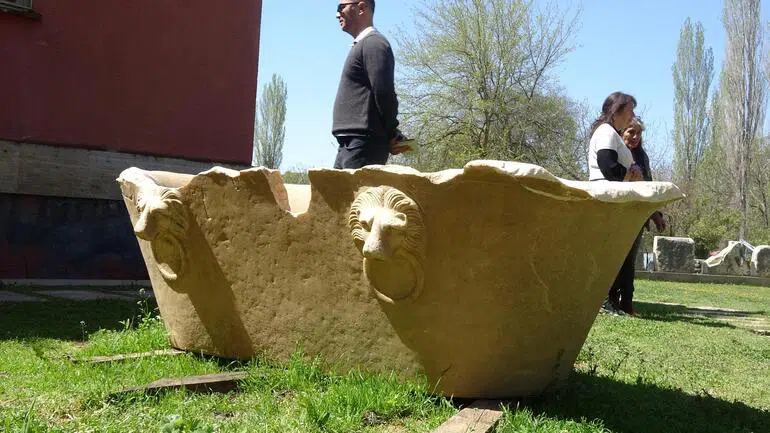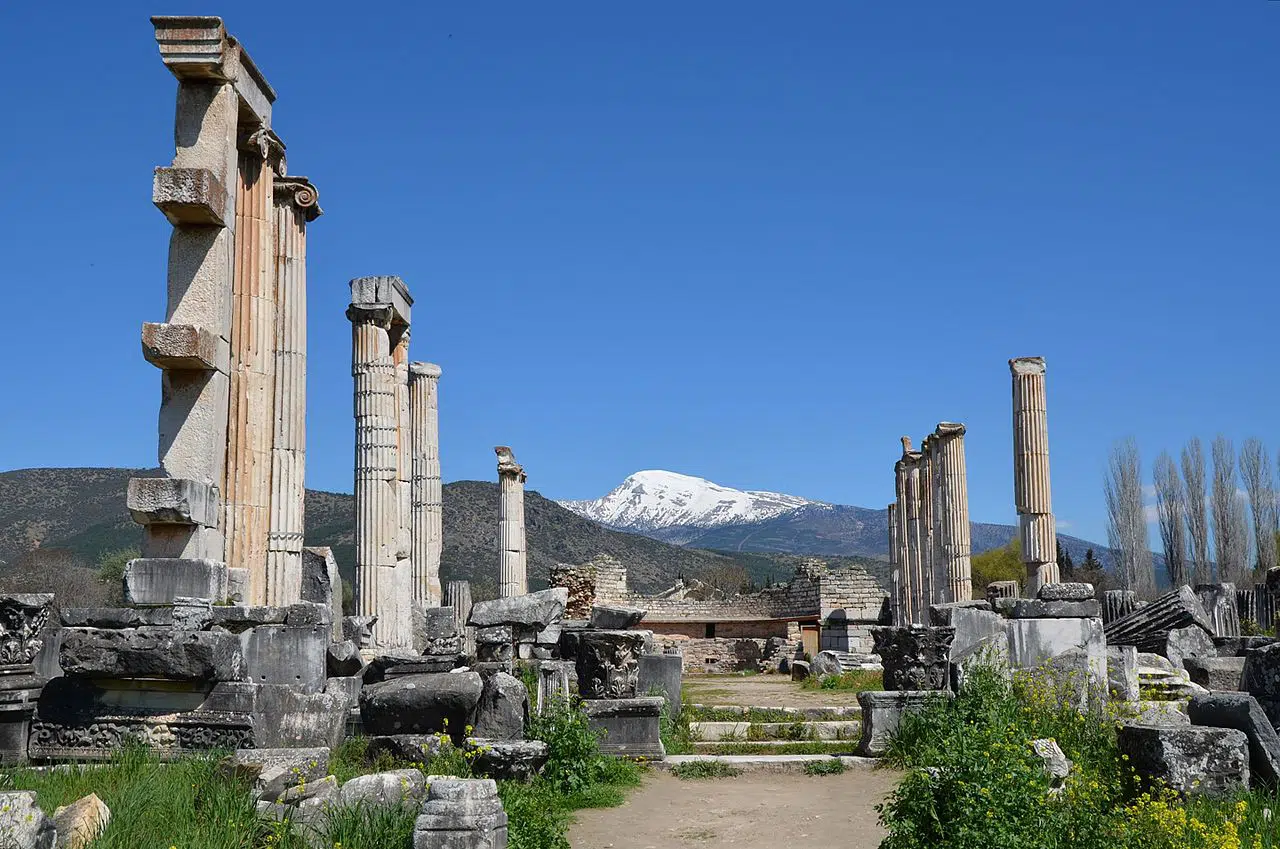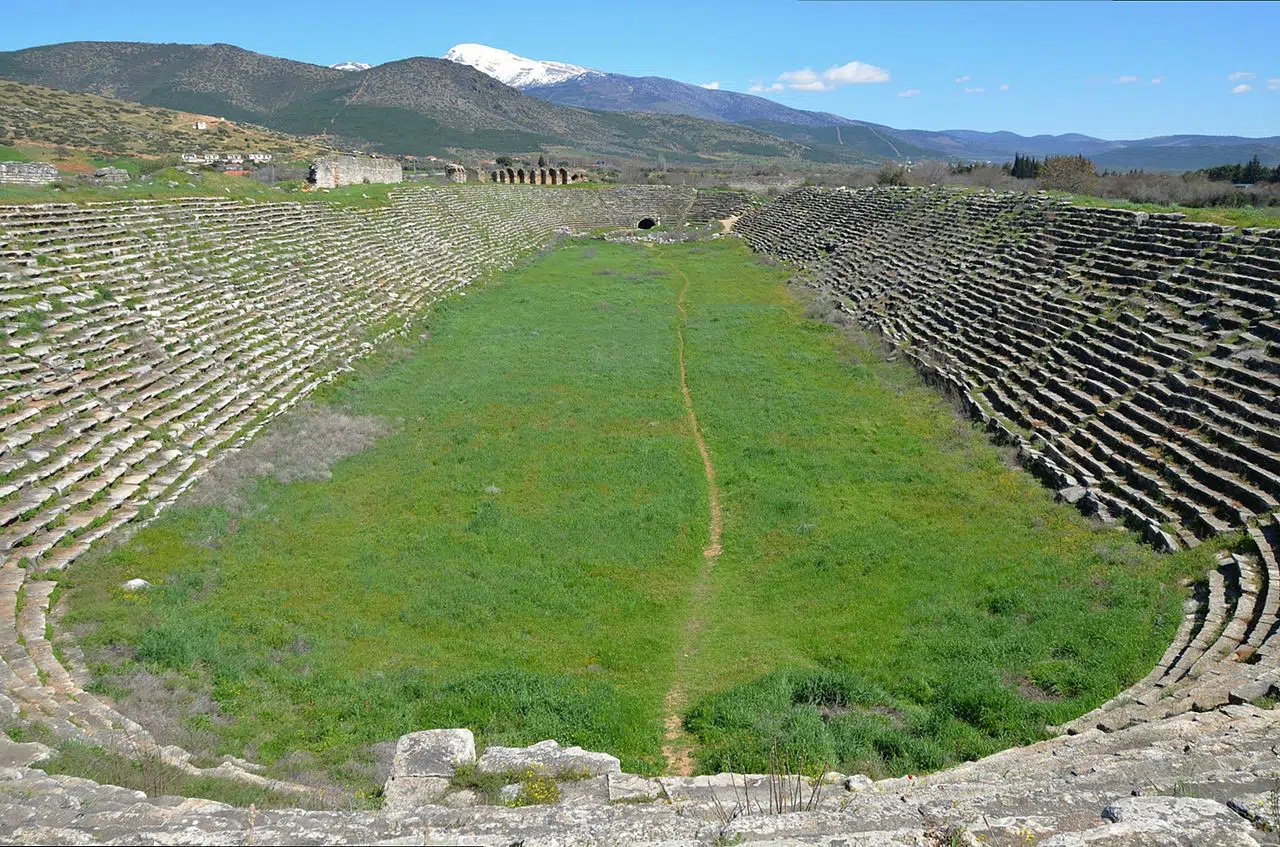
A marble bathtub from the ancient Greek city of Aphrodisias in western Anatolia was seized earlier in April by Turkish police before it was sold by smugglers in the western province of Aydın’s Karacasu district.
Turkish Archaeo News reports that the 1800-year-old marble bathtub weighs 1 ton and is almost 6 feet long. There are lion head reliefs on the right and left sides of the tub representing power and authority.
Experts pointed out that the bathtub may have belonged to a state administrator or a wealthy business person from the ancient Greek city.
Provincial Culture and Tourism Director Umut Tuncer said that the marble bathtub is a special piece found in this city, which dates back to the 1st century BC.
The people of Aphrodisias were wealthy
“People of Aphrodisias were wealthy. This bathtub, which is about 1,800 years old, is one of the rare examples in the world because it is completely made of marble,” it was said.
“As far as we know, it is the only example in Turkey. There are bathtubs created with various mud layers that have been found in Turkey before, but this completely marble structure actually expresses the wealth of this region and the welfare of the society. There are lion head reliefs on the right and left sides of the tub. We perceive that these reliefs represent power and authority,” the Turkish official said according to Hurriyet.
Ancient Greek city of Aphrodisias
The ancient Greek city of Aphrodisias which is on the UNESCO World Heritage List is located about 62 miles inland from the coast of the Aegean Sea and 140 miles southeast of İzmir (Smyrna).
It was named after Aphrodite, the Greek goddess of love, who had here her unique cult image, the Aphrodite of Aphrodisias.

According to the Suda, a Byzantine encyclopedic compilation, before the city became known as Aphrodisias (c. 3rd century BCE), it had three previous names: Lelégōn Pólis (Λελέγων πόλις, “City of the Leleges”), Megálē Pólis (Μεγάλη Πόλις, “Great City”), and Ninóē (Νινόη).
Sometime before 640 AD in the Late Antique period when it was within the Byzantine Empire, the city was renamed Stauropolis.
The Temple of Aphrodite was a focal point of the town, but the character of the building was altered when it became a Christian basilica. The Aphrodisian sculptors became renowned and benefited from a plentiful supply of marble close at hand.
At the ancient site, there is a beautiful amphitheater that must have been the setting for great performances of culture and arts.

There is also a 270 meters long ancient stadium. With 30 rows of seats on each side and around each end, it would have had a maximum capacity of around 30,000 spectators.
As the stadium is considerably larger and structurally more extensive than even the Stadium of Delphi, it is probably one of the best-preserved structures of its kind in the Mediterranean.
Sarcophagi were recovered in various locations, most frequently decorated with designs consisting of garland and columns. Pilasters have been found showing what are described as “peopled scrolls” with figures of people, birds, and animals entwined in acanthus leaves.
See all the latest news from Greece and the world at Greekreporter.com. Contact our newsroom to report an update or send your story, photos and videos. Follow GR on Google News and subscribe here to our daily email!



